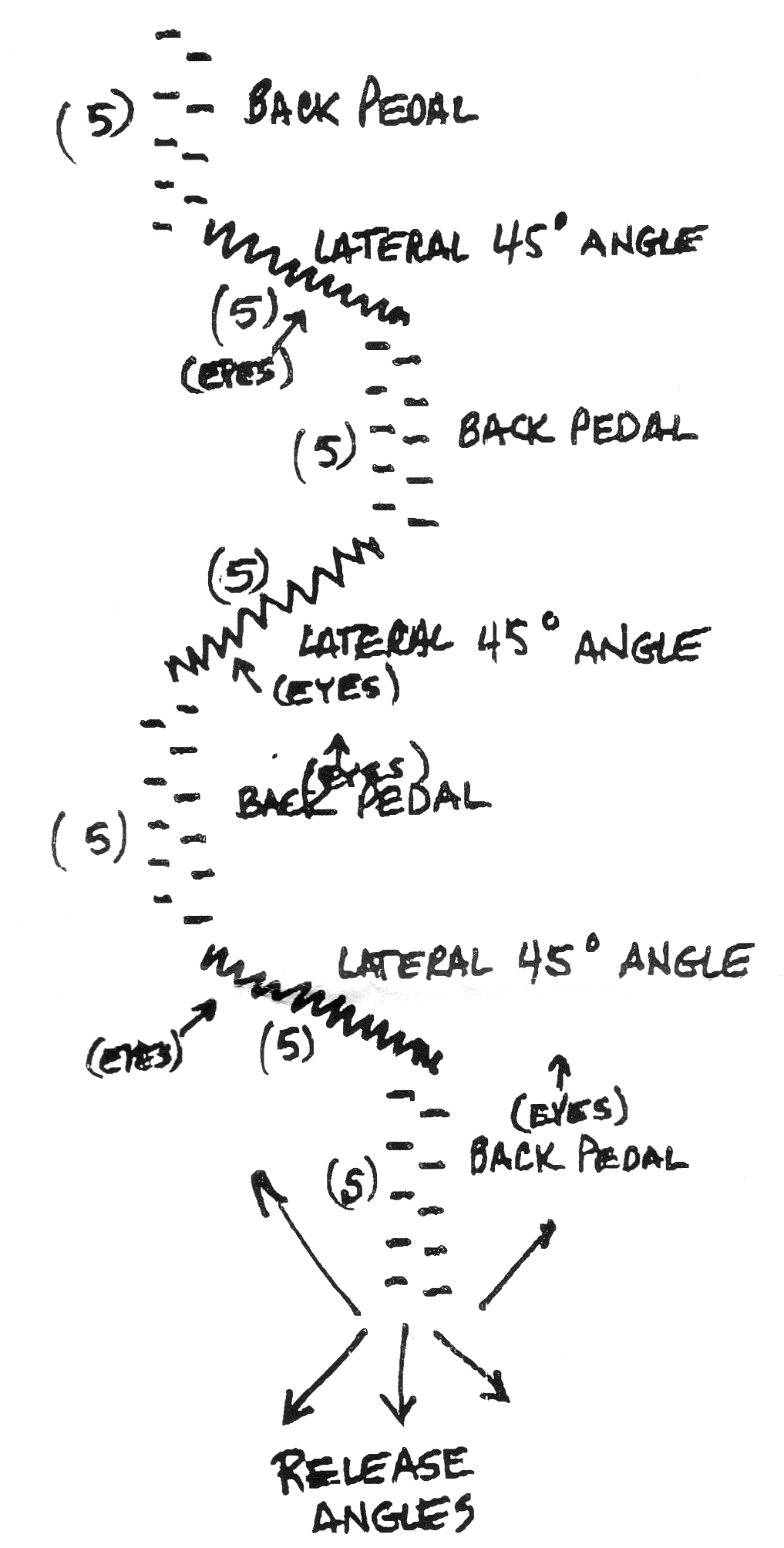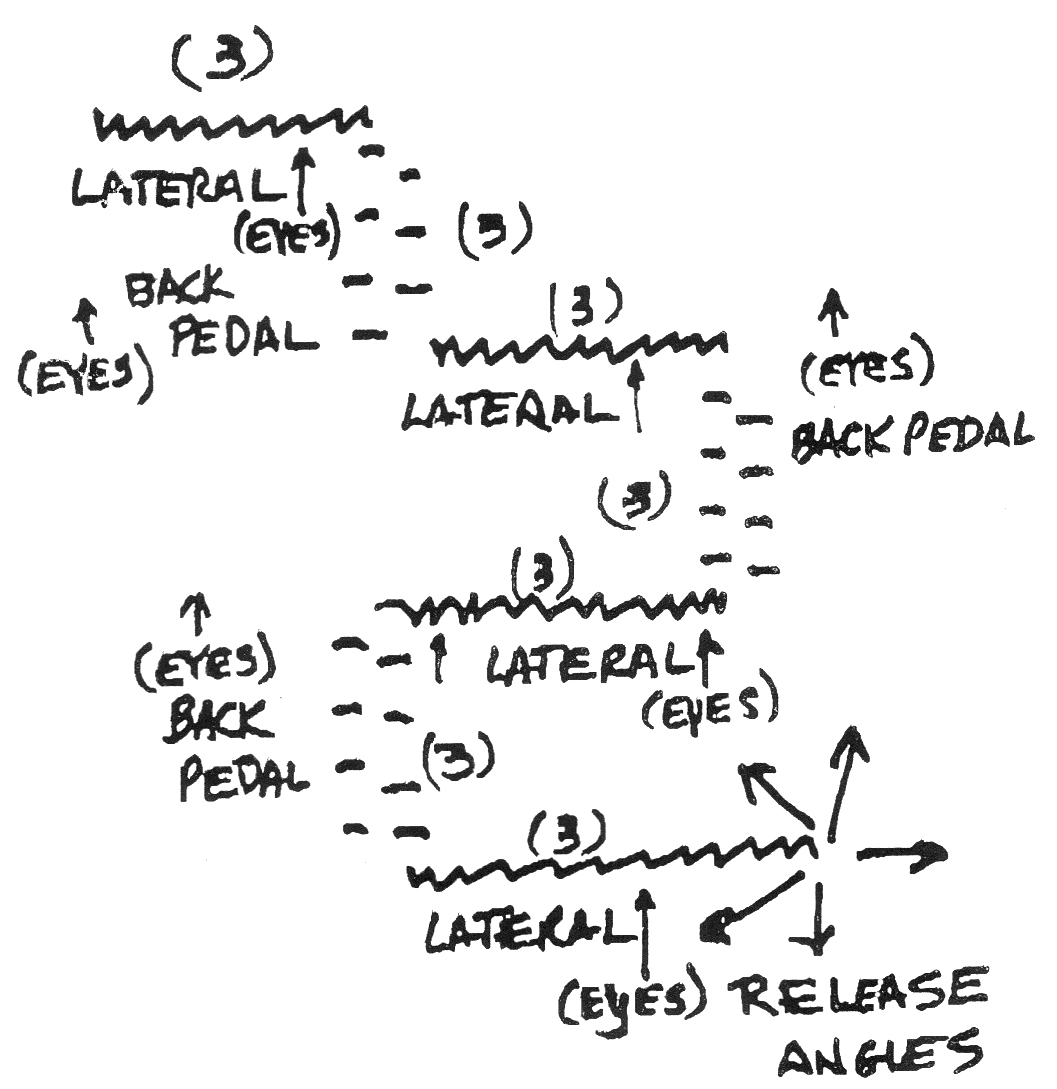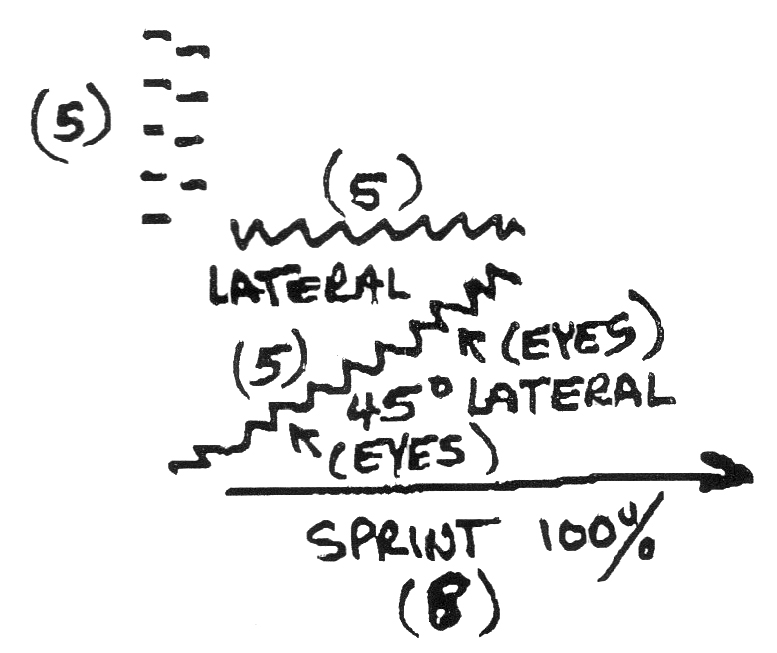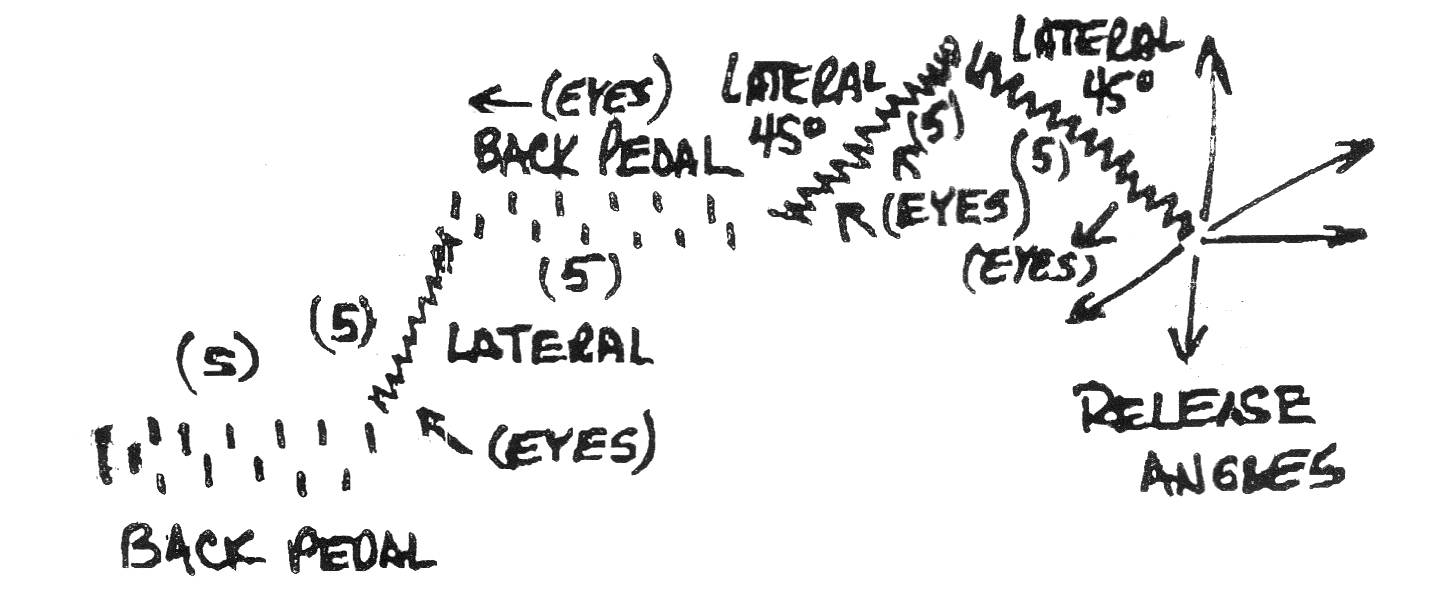Article CategoriesAFM Magazine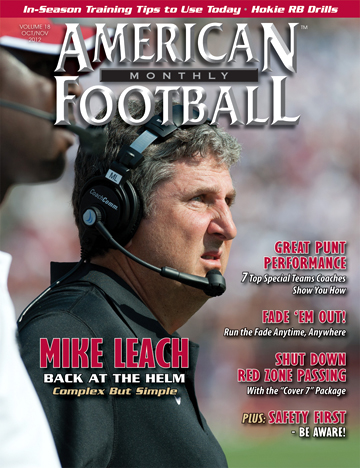
|
The Speed Report - Combination Movement Skill Drills FOR THE SECONDARYby: Dale BaskettFootball Speed Specialist © More from this issue What do I mean by combination movement skill drills? Combining position speed skill movements that you might do as one activity only – such as backpedaling – into two or three types of movement changes in the same drill. You will wind up incorporating several skills needed into a non-stop high-intensity and kinetic learning experience. Obviously, an athlete in the secondary must be adept at multi-movement skills, which are why they are practiced so frequently. My idea of doing the combined movements is to learn to execute the speed aspects effectively during many activities and not just one. Transitions will take place when athletes change from one phase of movement or speed to another phase. Running and reversing directions, for example, on a W drill is fine. However, it can become routine. The side effects of routine changes always create complacency on drills such as the Wave Drill. What I think could be better is if you combine the backpedal and the W together in one continuous motion, changing from one to the other. The familiarization of specific position skill movements have value but, it all should boil down to movement effectiveness, not routine single activity movements in continuous repetition. My viewpoint has always been concerned with effective technical execution for speed production. An additional benefit of combination movement drilling is that you can save time during practice and get more covered. Athletes in the secondary must be able to see and move rapidly in many directions with efficiency. This requires multi-change movement skills. Another reason for combination phases is that they emulate secondary drill multi-movements. As a coach, you will not have to do as many reps as you would if you did not combine multiple phases. For example, let’s say your secondary is practicing a drill that includes backpedaling, lateral movements, bursting to a sprint, decelerating and then bursting again. The only way this aspect will be fulfilled successfully is if you take time to monitor the velocity of the performance during practices. They must go slow enough to control the changes and angles that are provided. What you will realize is that it doesn’t take much time with combination work for them to get a grip on controlling movement. Make sure you keep the learning curve in line with the speed that’s being applied. You can’t go too fast or the motor processing necessary for movement control on these functions will never be fulfilled. They will be intense but inefficient. You need the two to work together. Here are four drills you can use to improve the play of your secondary:
Diagram # 2
Diagram # 3
Diagram # 4 |
|
| HOME |
MAGAZINE |
SUBSCRIBE | ONLINE COLUMNISTS | COACHING VIDEOS |
Copyright 2024, AmericanFootballMonthly.com
All Rights Reserved


